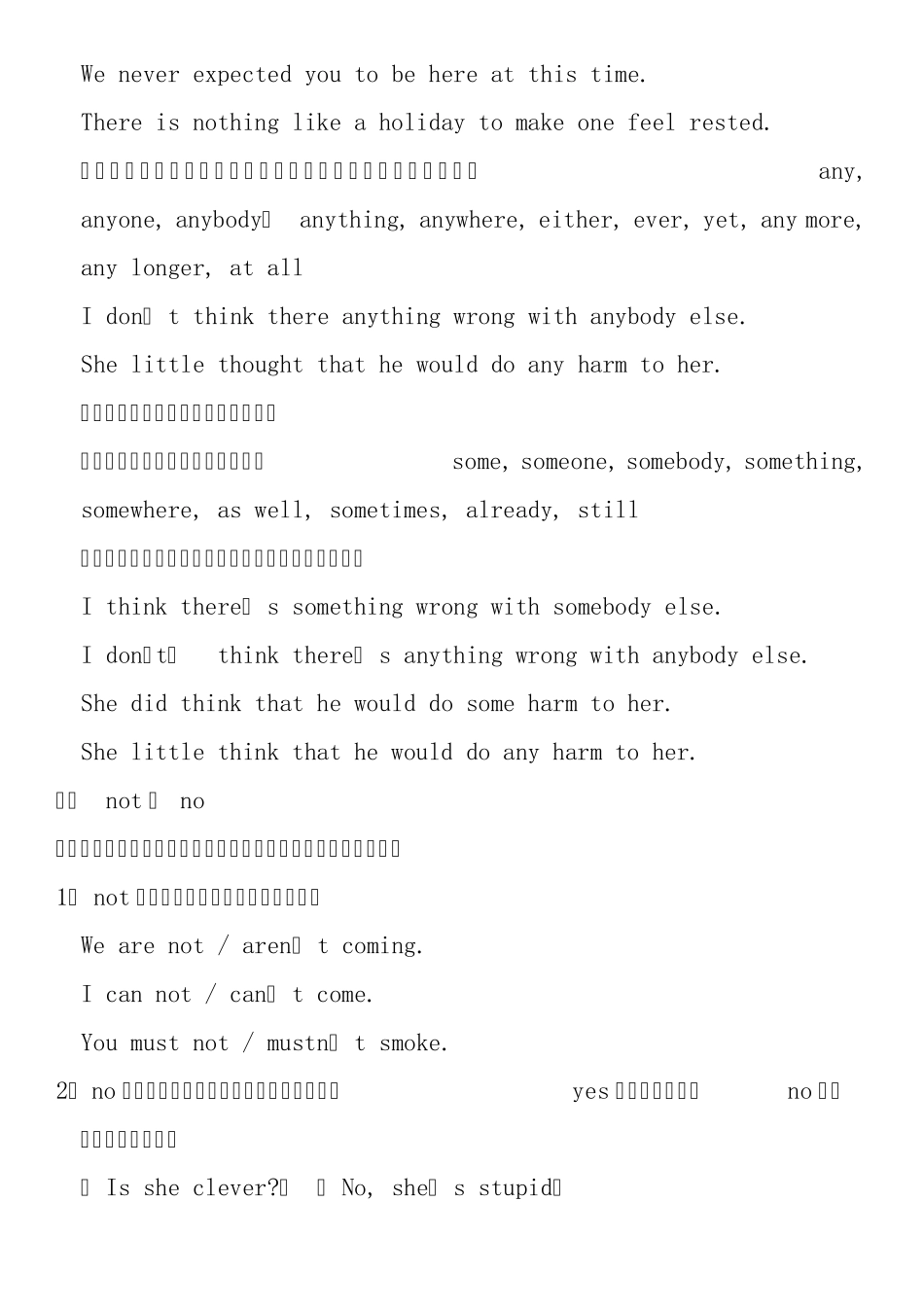3— Sorry , sir 4— Is this your„ .? 一、陈述句 陈述事实或看法的句子成为陈述句。陈述句有课分为肯定句和否定句,分别陈述肯定和否定的看法或事实。 二、否定句的构成 1、在功能词be( am, is, are, were, was), have( has, had), do( does,did) shall( should) will( would) can( could) may( might) must,ought, need, dear 等后面家否定词not(若谓语动词中原无功能词,则加特殊功能词do, does, did) 如:I have not / haven’ t said such foolish words before. He does not/ doesn’ t mean to hurt your feeling. 上述功能词可与否定词not 构成缩写,其形式分别为:isn’ t /aren’ t /wasn’ t /weren’ t / haven’ t / hasn’ t / hadn’ t / don’ t/ doesn’ t / didn’ t / shan’ t (shall not)/ shouldn’ t / won’ t / wouldn’ t / can’ t / couldn’ t / mayn’ t (少用)/ mightn’ t / mustn’ t / oughtn’ t / needn’ t/ daren’ t 这些功能词有些也可以与主语缩写 ‘ m / ‘ s (is, has) / ‘ re =are / ‘ ve =have /’ d=had, would / ‘ ll – shall, will I’ ve not said such foolish words before. 2、在句子中使用其他否定词 否定副词hardly, never, seldom, little, neither, nor, nowhere 等 否定的不定代词 nobody, none, no one, nothing, neither, few, little, no We never expected you to be here at this time. There is nothing like a holiday to make one feel rested. 否定句和各种疑问句中通常要使用表示否定意义的非肯定词:any, anyone, anybody, anything, anywhere, either, ever, yet, any more, any longer, at all I don’ t think there anything wrong with anybody else. She little thought that he would do any harm to her. 他好不认为他会做出任何伤害她的事 相应地肯定句中则要使用肯定词:some, someone, somebody, something, somewhere, as well, sometimes, already, still (注意肯定句与否定句中肯定词与非肯定词的转换) I think there’ s something wrong with somebody...


